Natural Capital
Strategic Approach
At Greenko, we’re driven to reach our Net Zero future by 2040, in line with the Paris Agreement 1.5-degree scenario. Our carbon-negative roadmap is a set of achievable, measurable targets to meet the Paris Climate Agreement and Sustainable Development Goals. We’re focussed on growth, sustainability, and decarbonisation to achieve these objectives.
Leadership at Greenko is unwavering in their commitment to preserving and conserving natural resources. We’re responsible for the consumption of resources such as energy and water, and take measures to reduce pollution, waste, and ecosystem degeneration. We’re also striving to increase the longevity of our assets, and improve circularity in projects and assets for a circular economy.

SEI Arushi Pvt. Ltd. Thimmamma Marrimanu - World's largest Canopy Banyan Tree in Kadiri, Andhra Pradesh
Our Performance
Mitigating Impacts on Nature
Environmental Management System
Greenko takes early action for preventing actions leading to environmental degradation. To ensure this, the Company conducts Environmental and Social Impact Assessment (ESIA) study before project development following the requirements of ten Equator Principles; eight International Finance Corporation (IFC); Social & Environmental Sustainability Performance Standards (PS); and IFC Environment, Health and Safety (EHS) Guidelines through its robust ESMS methodology.
Environment Management System KPIs
|
Particulars |
Since Inception |
FY 21-22 |
CY 2022 |
|
ESIA Studies |
45 |
1 ESIA completed |
1 New ESIA initiated |
|
ESMS Implemented |
85 sites |
Initiated in 20 new sites |
Initiated in 20 new sites |
|
ESMS Trainings Provided |
250 participants so far |
150 participants, 1,200 person hours of training |
112 participants, 900 person hours of training |
|
ISO 14001 Certified |
12 Plants and Corporate Office |
12 Plants and Corporate Office |
112 sites under implementation cycle for certification |
|
Green Company Rating |
11 |
3 |
8 |
GHG Emissions
The Company employs robust climate strategy for operationalising its emission reduction goals in line with the global climate agenda of limiting temperature rise below 1.5 degree Celsius and mitigating the irreversible environmental impacts resulting from climate change. Grid Electricity remains the major energy source for the Group which is augmented with DG sets in case of power emergency or power failure.
Energy consumption within the organisation
|
Sources |
UoM |
FY 21-22 |
CY 2022 |
||||
|
Total Consumption* |
Energy consumption (GJ) |
Emissions Generated (tCO2e) |
Total Consumption* |
Energy consumption (GJ) |
Emissions Generated (tCO2e) |
||
|
Diesel (DG sets + Company owned vehicles) |
Litres |
236,335 |
3,596.24 |
632.55 |
391,780 |
5,961.6 |
1,048.59 |
|
Petrol (Company owned vehicles) |
Litres |
9,256 |
303.43 |
21.03 |
22,704 |
744.28 |
51.58 |
|
LPG |
Kgs |
87,753 |
4,150.72 |
261.91 |
101,063 |
4,780.28 |
301.63 |
|
Grid electricity consumed |
kWh |
19,508,000 |
70,228.8 |
15,801.48 |
39,796,000 |
143,265.6 |
32,234.76 |
* Includes Head Office, Assets and Project Sites.
GHG Emissions Generated (in tCO2)
|
Emission Category |
FY 19-20 |
FY 20-21 |
FY 21-22 |
CY 2022 |
|
Scope 1 |
1,286.98 |
2,541 |
3,067.78 |
2,575.24 |
|
Scope 2 |
22,967.38 |
20,972 |
15,801.48 |
32,234.76 |
|
Scope 3 |
1,746 |
1,455 |
39,645.02 |
39,533.32 |
*All scope emissions include CO2 emissions only
**Scope 1 emissions also include Fugitive emissions
***Scope 3 categories include Purchased Goods and Services, Capital Goods, Fuel & Energy related – T & D Losses, Waste Generated in operations, Upstream transportation and Distribution, Business Travel and Employee commuting
****Greenko follows operation and control approach for computing emissions
*****Scope 3 emissions are incomparable between the years owing to addition of new categories
Scope -4: GHG Emissions (Direct and Indirect) Avoided (in million Tonnes of CO2)
Scope -4: GHG Emissions (Direct and Indirect) Avoided (in million Tonnes of CO2)
|
GHG Emissions Avoided |
FY 19-20 |
FY 20-21 |
FY 21-22 |
CY 2022 |
|
Emissions Avoided |
8.2 |
12.47 |
8.69 |
9.47 |
Air Emissions Avoided from Renewable Energy Generation (in Tonnes)
|
Particulars |
FY 19-20 |
FY 20-21 |
FY 21-22 |
CY 2022 |
|
Nitrogen Oxides (NOx) |
47,851.2 |
75,787.2 |
51,484.4 |
56,136 |
|
Sulphur Oxides (SOx) |
71,776.8 |
113,680.8 |
77,226.6 |
84,204 |
|
PM10 |
9,769.62 |
15,473.22 |
10,511.4 |
11,461.1 |
Projects under Carbon Market Mechanisms
Since its inception, Greenko has actively participated in several government initiatives and carbon market systems. Greenko filed 26 projects under the Clean Development Mechanism (CDM) projects with the UNFCCC during the current reporting period, producing 26,43,069 Certified Emission Reduction (CER) credits.
Additionally, 10 plants and 2 plant participants are registered via the REC mechanism and IREC mechanism respectively, and additional registration of 10 plant participants is also in progress with Global Carbon Council (GCC).
|
Projects Registered under CMM Categories |
FY 21-22 |
CY 2022 |
|
Projects under CDM |
26 |
0 |
|
Projects registered under VCS |
12 |
0 |
|
Projects registered under Gold Standard (VCS&CDM) |
13 |
5 |
|
Plants registered via REC mechanism and IREC mechanism |
12 |
0 |
|
Revenue Generated through CDM |
FY 21-22 |
CY 22 |
|
Sale of carbon credits (VER, GS VER, IREC’s) |
₹ 69.75 Cr |
₹ 30.02 Cr |
New Energy Engine
"Through ZeroC, the new energy business vertical, Greenko Group has forayed into an exciting and pioneering journey of green molecules. The immediate mission of ZeroC is to establish Greenko as the world’s pre-eminent leader in green molecules business by being able to achieve the lowest levelised cost of green hydrogen and green ammonia. We aim to do that through a series of strategic decisions and partnerships that will help us create the most cost-effective, reliable, and efficient green hydrogen ecosystem.
In a JV with John Cockerill of Belgium, Greenko is setting up one of the largest electrolyser plants globally – a 2 GW electrolyser facility that will not only ensconce Greenko’s name firmly as a frontline electrolyser manufacturer but will also enable manufacturing of the most cost optimal electrolysers in India thereby securing equipment for its green molecule production plans as well as providing great fillip to India’s green hydrogen ambitions by indigenising an important technology. Green ammonia is fast emerging as the best vector of green hydrogen for wide scale use as fuel and industrial feedstock, and ZeroC plans on being at the forefront of this business by setting up several “firsts”: India’s 1st commercial scale green ammonia facility (100 KTPA plant at Una, Himachal Pradesh to be commissioned by 1st half of 2024), India’s 1st million tonne green ammonia plant (1-MMTPA plant in the east coast by 2025) and by being the partner of choice with ONGC in setting up another 1-MMTPA green ammonia plant in the west coast to be commissioned by 2026. Powered by Greenko’s pathbreaking IRESP projects enabling lowest cost RE RTC, and through collaboration with some of the most reputed ammonia licensors and EPC players, Greenko ZeroC is well poised to achieve the distinction of being world’s leading green ammonia producer. The excitement created by Greenko ZeroC’s green ammonia projects can be gauged from the fact that Greenko has already signed defining MoUs with POSCO and Keppel and discussing green ammonia offtake agreements with several European heavyweights.
As a flag bearer of India’s green hydrogen ecosystem, Greenko ZeroC has been regularly engaging with government and non-government organisations such as ETAC, MNRE, MoPNG, MoP, Niti Aayog, and RMI and suggested necessary policy changes to expedite India’s transition into a green hydrogen economy. Greenko ZeroC was one of the few Indian organisations to have engaged with the EU in framing of the RED II/III norms.
In just over a year since its inception, Greenko ZeroC has already carved a niche for itself as the leading name in India’s green hydrogen landscape. The journey has well and truly started, and the future certainly looks bright!”
Arnava Kishore Sinha Vice President, Sales & Commercial, ZeroC
Ecological Restoration
Water Management
The nature of Greenko’s business involves less water-intensive operations unlike conventional thermal power plants. At Greenko, water is mainly used for domestic purposes and cleaning the solar panels. Greenko strives to constantly monitor its freshwater consumption and discharge wastewater in line with statutory requirements. Greenko ensures to consider water use efficiency as a significant factor while evaluating the feasibility of new projects.
To minimise or offset any impacts on the surrounding environment, Greenko not only takes mitigation measures like development of watersheds, rainwater harvesting, drip or sprinkler irrigation, and water-efficient cleaning technologies but also proactively takes efforts to not cause the negative effects.
However, it has been noticed that the usage of water has increased comparatively. In view of this, Greenko plans to conduct a thorough water management assessment in CY 2023 across all the assets and develop a strategic water reduction road map to optimise freshwater use.
Water Recharge - Kurnool, A.P.
Water Management KPIs
|
KPI |
Units |
Hydro |
Wind |
Solar |
Head Office |
Pinnapuram PSP |
FY 21-22 |
CY 2022 |
|||||
|
FY 21-22 |
CY 2022 |
FY 21-22* |
CY 2022 |
FY 21-22 |
CY 2022 |
FY 21-22 |
CY 2022 |
FY 21-22 |
CY 2022 |
||||
|
Total quantity of water used for plant operations |
kL |
0 |
1,000 |
4,420 |
5,067.16 |
81,571 |
269,441.06 |
0 |
0 |
0 |
0 |
85,991 |
275,508.22 |
|
Total quantity of water used for office and domestic purposes |
kL |
16,399 |
118,994 |
15,132 |
157,341.74 |
21,265.92 |
10,811.76 |
26,856 |
21,480 |
15,512.5 |
21,717.5 |
97,515.42 |
330,345 |
|
Total number of rainwater harvesting systems available |
No. |
2 |
2 |
10 |
10 |
50 |
96 |
- |
- |
- |
2 |
62 |
110 |
|
Total quantity of rainwater collected |
kL |
20 |
120 |
380 |
21,138 |
15,216 |
300 |
- |
- |
6,577.3 |
5,666.76 |
159,103.3 |
27,224.76 |
* Data represented for WINSOM Sites only.
Waste Management
The Group has aligned its waste management practices to the Company’s Environment and Social Management System (ESMS). The Company strives to reduce its waste by improving the circularity in the operational ecosystem via reusing or recycling. In accordance with the ESMS, Greenko has streamlined its operations to identify and monitor the waste generating streams across its sites. Greenko has also initiated Plastic Protocol to delineate the usage of single-use plastics in operation and is exploring the feasibility of replacing them with a sustainable alternative. The Company also conducts periodic internal audits of its sites for ensuring strict compliance to outlined management systems including waste management. Across the project sites, Greenko has aligned with authorised third parties for handling hazardous wastes and E-Wastes and disposing off sustainably.
Food Composting - Towards the Goal of Zero Food Waste
In an innovative approach to reduce GHG emissions, Greenko has initiated a Compost plant in its Head Office. Implementing food composting technology, the Composter House comprises a machine that has the capacity to convert 100 kg food waste into 25 kg bio compost between 24 - 48 hours.
This compost is later used for planting and greening the campus as well as is available for employees at no cost to encourage plantations at their residences. This initiative also helps us to move towards our goal of zero food waste.
The Organic Waste Converter can compost around 3.5 tonnes of food waste annually. This serves to eliminate 2,380 kg of CO2 emissions which is equivalent to the amount that 110 trees can absorb annually.
Waste Generation by type for FY 21-22 (in kg)
|
Waste Types |
GAM |
Head Office |
Projects |
FY 21-22 |
End of Life treatment |
||
|
Hydro |
Wind |
Solar |
|||||
|
Hazardous Waste |
|||||||
|
Used batteries |
3,000.8 |
5,100 |
10,500 |
NA |
NA |
18,600.8 |
EPR |
|
Used oil |
9,600 |
47,900 |
6,021 |
NA |
3,418 |
63,521 |
Disposed to authorised vendors |
|
Chemical waste |
0 |
500 |
0 |
NA |
NA |
500 |
Disposed to authorised vendors |
|
Used air filter scrap |
0 |
142 |
450 |
NA |
NA |
592 |
Disposed to authorised vendors |
|
Oil-soaked cotton/cloth |
0 |
12,400 |
0 |
NA |
150 |
12,400 |
Disposed to authorised vendors |
|
Non-Hazardous Waste |
|||||||
|
Packaging waste |
265 |
829.2 |
1,823 |
482,072 |
400 |
2,917.2 |
Reused |
|
Paper waste |
173 |
484.5 |
385 |
- |
1,042.5 |
Recycled |
|
|
Metal scrap |
19,479 |
19,420 |
18,770 |
- |
57,669 |
Reused & Sold to Scrap Dealer |
|
|
Wood |
554 |
1,910 |
2,275 |
- |
4,739 |
Reuse |
|
|
Plastic and rubber waste |
945.5 |
1,483 |
1,728 |
- |
4,156.5 |
Disposed to authorised vendors |
|
|
Kitchen waste |
9,540 |
631 |
7,948 |
NA |
29,200 |
47,319 |
Composting |
|
E-Waste |
|||||||
|
Information technology and telecommunication equipment |
0 |
100 |
100 |
- |
- |
200 |
Disposed to authorised vendors/MoU with CMET |
|
Consumer electrical and electronics |
0 |
10 |
20 |
- |
12 |
30 |
Disposed to authorised vendors/MoU with CMET |
|
Significant Spills |
|||||||
|
Oil Spills |
4 |
245 |
104 |
NA |
- |
353 |
Contained, Collected, Treated and Disposed |
|
Chemical Spills |
3 |
30 |
1 |
NA |
- |
34 |
Contained, Collected, Treated and Disposed |
Waste Generation by type for CY 2022 (in kg)
|
Waste Types |
GAM |
Head Office |
Projects |
CY 2022 |
End of Life treatment |
||
|
Hydro |
Wind |
Solar |
|||||
|
Hazardous Waste |
|||||||
|
Used batteries |
6,158 |
35,589 |
21,756 |
NA |
58 |
63,561 |
EPR |
|
Used Oil |
7,028.8 |
83,014.85 |
3,801 |
NA |
8,478.9 |
102,323.55 |
Disposed to authorised vendors |
|
Chemical waste |
5 |
144.2 |
110 |
NA |
- |
259.2 |
Disposed to authorised vendors |
|
Used air filter scrap |
0 |
0 |
0 |
NA |
- |
0 |
Disposed to authorised vendors |
|
Oil-soaked cotton/cloth |
792.2 |
26,132 |
350 |
NA |
- |
27,274.2 |
Disposed to authorised vendors |
|
Non-Hazardous Waste |
|||||||
|
Packaging waste |
4,413 |
1,577 |
797 |
15,000 |
0 |
6,787 |
Reused |
|
Paper waste |
80.3 |
1,038 |
170.5 |
0 |
16,288.8 |
Recycled |
|
|
Metal scrap |
66,363 |
15,118 |
8,951 |
277,470 |
367,902 |
Reused & Sold to Scrap Dealer |
|
|
Wood |
185 |
990 |
8,602 |
0 |
9,777 |
Reuse |
|
|
Plastic and rubber waste |
294.6 |
1,683 |
407 |
1,561 |
3,945.6 |
Disposed to authorised vendors |
|
|
Kitchen waste |
8,718 |
5,007 |
4,824 |
2,491 |
21,900 |
42,940 |
Composting |
|
E-Waste in Nos. |
|||||||
|
Information technology and telecommunication equipment |
- |
- |
- |
2,242 |
- |
2,242 |
Disposed to authorised vendors/MoU with CMET |
|
Significant Spills |
|||||||
|
Oil Spills |
16 |
300 |
67.09 |
NA |
0 |
383.09 |
Contained, Collected, Treated and Disposed |
|
Chemical Spills |
0 |
5 |
10 |
NA |
0 |
15 |
Contained, Collected, Treated and Disposed |
Materials Management
Greenko being an energy transition and industrial decarbonisation solutions Company deriving the energy from natural resources, eliminates the need for input raw materials except for plant set-up and O&M purposes. The major raw material consumption is summarised below:
Raw Material Consumption (in kgs)
|
Particulars |
FY 21-22* |
CY 2022* |
|
Lubrication Oil (Engine oil, gear oil etc.) consumed |
28,217.24 |
45,857.70 |
|
Turbine Oil |
193.5 |
4,851.00 |
|
Transformer Oil |
636.35 |
44,605.91 |
|
Grease |
6,109.75 |
10,996 |
|
SF6 Gas |
69 |
37 |
|
Gear Oil |
3,931.2 |
4,231.80 |
|
Oxygen Cylinders (no.) |
216 |
190 |
Biodiversity Management
It is imperative for a renewable energy business to consider biodiversity as a highly material issue through a renewed lens of environmental, economic and social risks. The projects are set-up with a clear analysis of comprehensive Environmental Impact Assessment (EIA) intending to identify and measure the impacts of the projects on the surrounding environment. Greenko Group has also taken strides towards increasing the green cover across its operational sites through extensive plantation programs, which will help the Company develop natural CO2 sinks in the communities in which it operates.
Greenko also commits to preserve the diversity of flora and fauna through its ecological restoration programmes such as habitat conservation, natural or sustainable farming, protecting sea-based wildlife systems, fish seeding initiatives to restore, protect, and enhance biodiversity.
Greenko has started promoting Organic farming with sustainable agricultural practices and motivate to shift towards organic farming at Rollapadu & Jalakanur villages as part of environment protection and Habitat Conservation of the Great Indian Bustard (GIB) at Rollapadu Wildlife Sanctuary.
Greenko has surpassed its performance indicators from FY 20-21 in tree plantation by 45%, no. of biodiversity conservation programmes conducted has also raised by 7,920, 720 new bird nests have been provided and fish seeding initiatives to restore has also been increased by 51,000.
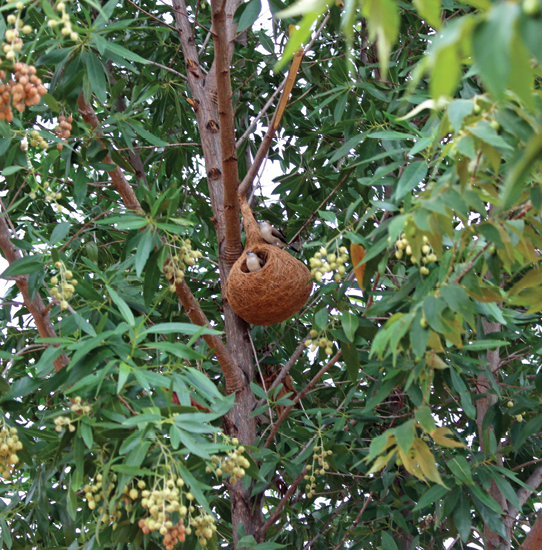
Axis Wind Farms Pvt Ltd, Andhra Pradesh
Biodiversity Management KPIs
|
KPI |
Units |
Hydro |
Wind |
Solar |
FY 21-22 |
CY 2022 |
|||
|
FY 21-22 |
CY 2022 |
FY 21-22 |
CY 2022 |
FY 21-22 |
CY 2022 |
||||
|
Number of trees planted |
No. |
1,065 |
127,378 |
106,413 |
234,856 |
234,856 |
|||
|
% plant survival over last 3 years |
% |
63 |
55 |
68 |
62 |
62 |
|||
|
Total greenery area developed |
m2 |
12,400 |
38,445.14 |
278,880 |
141,235.3 |
336,992.11 |
126,666.61 |
628,272.14 |
306,347.05 |
|
Number of biodiversity conservation programmes |
No. |
9 |
7 |
51 |
11 |
8,001 |
4 |
8,061 |
22 |
|
New bird nests provided |
No. |
0 |
0 |
143 |
245 |
1,019 |
14 |
1,162 |
259 |
|
Fish seedings |
No. |
150,000 |
200,000 |
0 |
0 |
1,000 |
0 |
151,000 |
200,000 |
|
Number of noise mitigation measures taken |
No. |
3 |
2 |
17 |
8 |
15 |
10 |
35 |
20 |
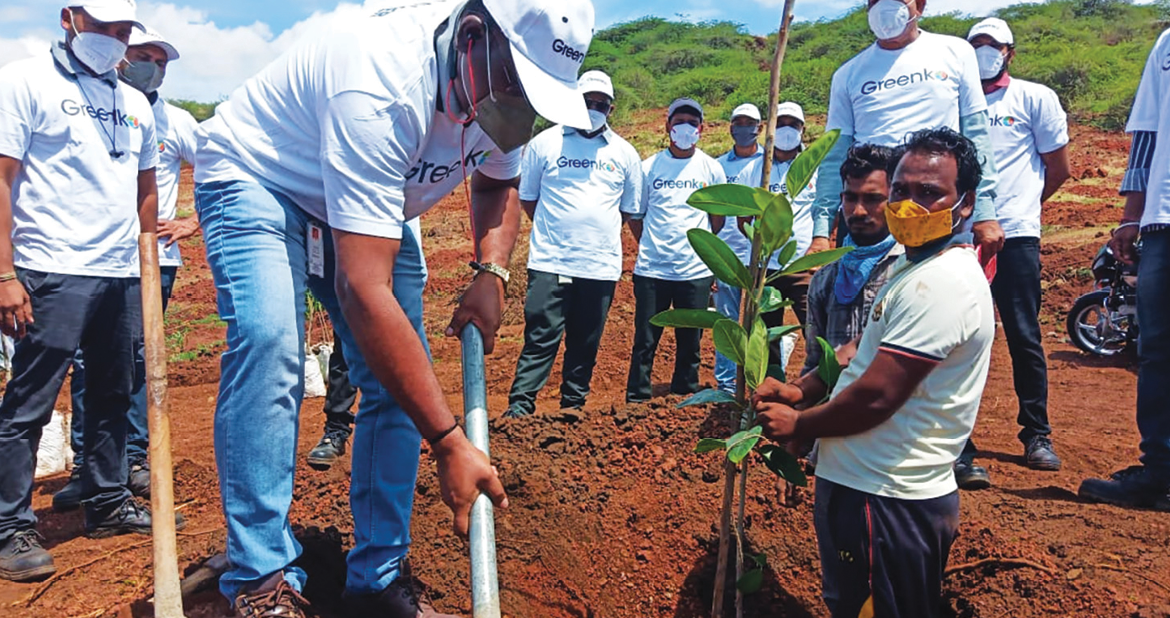
Sapling Plantation, Bijapur Cluster, Karnataka
Land Management
Spreading across 15 states all over the country, Greenko’s nature of operations require huge land especially for wind and solar plants. The Company has great deliberations on the various factors like availability of land, displacement or relocation of communities and effects on the biodiversity and ecosystem surrounding the land.
During the project construction phase, the impact on land is anticipated due to various activities such as site levelling, filling and development. These activities may lead to soil erosion as well as silting of nearby water bodies. To overcome this, the Group carries out the following measures:
- Muck dumping and restoration is carried out for preventing and controlling soil erosion
- Natural drainage system is followed to protect contours
- Compensatory afforestation as well as biodiversity management plan is implemented to conserve plant species and faunal habitat
During the operational phase, the Group also ensures minimal environmental impact on the ecosystem. The land used for construction actives is restored and green-belt around the project sites are created, which provides habitat for the wildlife in the area. These measures are done in compliance with the legal and social regulations.
Greenko ensures implementation of Performance Standards no. 5 on Land Acquisition and Involuntary Resettlement at all the sites. The Group ensures to avoid or minimise involuntary resettlement wherever feasible by:
- Exploring alternative project designs
- Mitigate adverse social and economic impacts from land acquisition or restrictions on affected persons use of land by providing compensation for loss of assets at replacement cost
- Ensuring that resettlement activities are implemented with appropriate disclosure of information, consultation and the informed participation of those affected
The Group also makes sure that to improve or at least restore livelihoods and standards of living of displaced persons and improve living conditions among displaced persons.
Greenko while conducting ESIA or implementing ESMS, ensures that land related environmental and social risks are identified, evaluated and necessary controls in the form of management programs are implemented.
Case Study 1
Continuous Attention to Environment
During project execution and asset management, the following environmental stewardship measures are taken:
- Establishing advanced internal testing labs on project locations. As a result, fewer test samples will need to be sent to outside laboratories, lowering carbon emissions
- Conducting video calls for remote inspections, which will cut down on transportation-related carbon emissions
- To cut down on paper use, the deviation process is done online. The GQAP’s (Greenko Quality Assurance Portal) deployment would result in paper conservation in the future. Inspections, tests, and all the reports they produce will be filed online and made accessible through this portal in real time
- Reusing scrap from testing specimens and samples in the project site for a variety of uses will cut down on waste and land utilisation
Additionally, it is expected from the vendors to utilise environmentally friendly materials whenever possible.
Greenko incorporates environmental factors as much as feasible into the designs. The organisation is putting the following few procedures into practice:
- Creating safe earthing procedures for the protection of people and wildlife
- Recommending gas-insulated switchgear to lessen the impact on flora and fauna, EMF, and the need for additional land
- Recommending powerhouse designs that use the greatest technological and financial strategies
- Recommending CFL and LED lighting for power plants
- Recommending energy-saving air conditioners in plants
- Aiming to eliminate as much plastic, asbestos, and other hazardous materials through innovative design
- Generating all the electric power in the IRESP from raw materials that are 100% pollution-free (sunlight, wind, and water).
Climate Proofing the Business
Climate Risk Management
Primarily, the core business strategy of Greenko is to stick to renewables, storage and green fuels which shall significantly reduce the impact on the climate. Further, to safeguard the Greenko’s assets from physical climate changes, the Group places significant focus on Climate Risk Assessment and strategising solution for adaptation and mitigation. The Company aims to align its plant teams to understand the site vulnerability and readiness for responding to climate change related impacts. The Company’s risk management framework has a well-defined methodology for proactive identification and analysis of climate-related issues and risks. Greenko conducts climate risk assessment for all its sites as a part of its risk management process. As part of the analysis, the Company has studied the projections of the issues arising due to climate change across all sites using IPCC’s RCP 4.5 scenario and the results are summarised in the table below:
Key Climate Change Risks and Opportunities
Net Zero Roadmap
Greenko understands that the challenges of climate change and global warming are deteriorating at an alarming rate and requires action to be taken on immediate basis. The Company understands that as a global leader in clean energy transmission, it has to take stringent action to achieve the objective of a sustainable future.
Greenko has put tremendous focus on analysing the physical and transitional impacts of climate change across its project sites, which has put the Company on track towards developing climate-resilient assets. In addition, Greenko has also put a spotlight on building resilient systems and strategising business models adapting to climate change impacts.
Greenko has committed to the Climate Pledge as a part of its initiative towards becoming carbon neutral in line with global climate agenda. The Climate Pledge was co-founded by Amazon with the Global Optimism in 2019. As a part of its pledge and UNFCCC’s “Race To Zero”, Greenko Group has committed to becoming Net Zero Carbon by 2040 which is a decade early than the global Net Zero 2050 commitment.
Greenko is in the process of developing a Net Zero Roadmap for the Company with targets and actions laid out for substantially reducing greenhouse gases, improve the overall impact on the environment and positively respond to the Climate Emergency taking into consideration both the risks and opportunities it poses. Greenko is well on its way to define its organisational and operational boundaries for this roadmap and chalk out the action plan for the next 2 decades.
Greenko shall look to mobilise all its stakeholders including value chain partners to achieve its Net Zero Commitment by 2040
Greenko’s Net Zero Roadmap
- Our baseline is FY 21-22 for our ambition of Net Zero
- We adopt Scope > Measure > Analyse > Target > Act > Report model
- We measure our progress annually and report
- We implement mitigation plans and achieve Net Zero
Promoting Climate Change Conscious Motorsport
Greenko along with Ace Nxt Gen has brought the FIA Formula E World Championship race to India for the very first time as Greenko Hyderabad E-Prix on 11th February, 2023. Formula E is the only all-electric world championship certified by Fédération Internationale de l’Automobile (FIA) and the fastest growing motorsport in the world
Referred to as the planet’s favourite sport, the Formula E’s founding purpose is to counteract the devastating effects of Climate Change. This is in line with the vision of our promoters. The championship in India is centred around three core values: Energy, Environment & Entertainment, showcasing the very latest in sustainable mobility technology where all the race cars are charged with solar power. Formula E has completed 8 seasons of racing across iconic cities like London, Paris, Berlin and was now organised in Hyderabad for season 9.
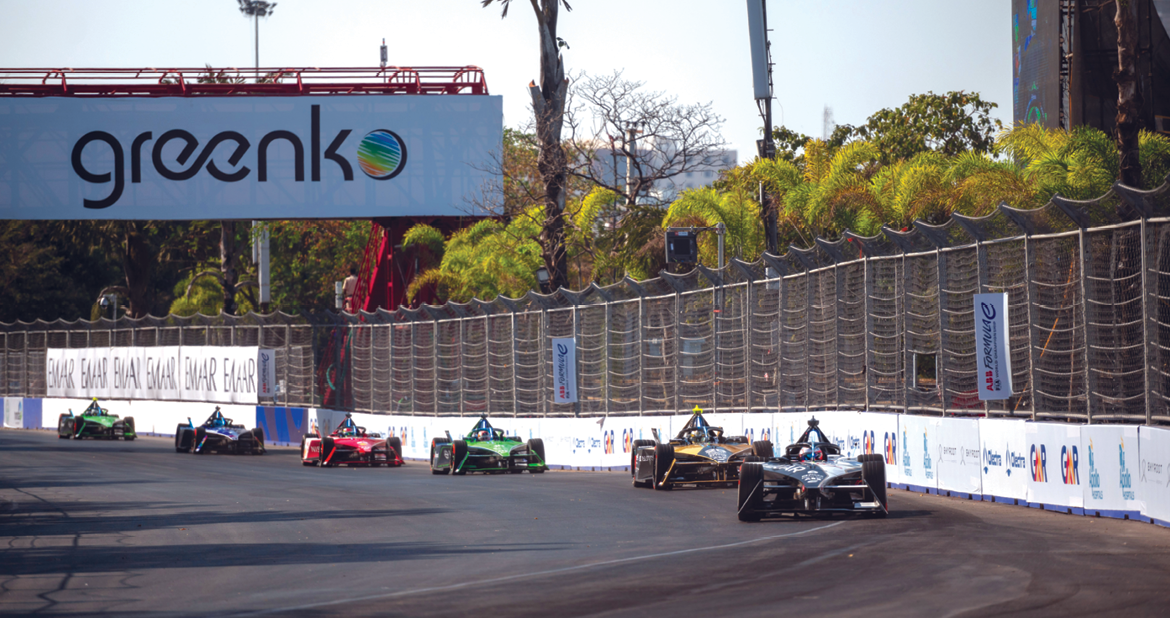
Formula E Electric Car Race, Greenko Hyderabad E-Prix, Hyderabad
Circular Economy
For Greenko, circular economy is the key element and represents an opportunity as a driver for its Climate Action, Energy Transition and Net Zero Commitment. Greenko has defined its circular economy model by including the entire value chain from suppliers to customers. From the beginning, emphasis is given on Sustainable Procurement and life-cycle approach is adopted through the value chain with a focus on resource optimisation repair, reuse, recycle and re-purpose.
In addition, Greenko is also in the process of developing circularity road-map in the near future. At the design stage itself, Greenko would like to include circularity approach by engaging and orienting its suppliers and OEMs towards circularity. Across GAM, Greenko expands its efforts to repair, reuse & refurbish the components of wind, hydro and solar plants and extend life of equipments.
Greenko is committed to become a zero waste to landfill Company. All its non-hazardous waste is diverted away from landfill by putting into circular economy approach and through sale to authorised recyclers.
Through Greenko’s Assets
Greenko has chosen to manage its organisational assets using a circular business approach to bring the costs down while protecting and strengthening the natural capital. By implementing a life cycle perspective to its assets, Greenko has investigated circular value pools throughout its operations.
Three levels of circularity at Greenko are:
- Sharing Business Models
- Circular Choices
- Managing the end-of-life
Initiatives being taken:
A constant effort is being put in to encourage and bring in as many machinery parts as possible into the circular economy through repair, refurbish, reuse and recycle. A consolidated tabular data is given below across the three Business Units:
|
Business Units |
No. of materials brought into circularity |
UOM |
FY 21-22 |
CY 2022 |
||||||
|
Repair |
Refurbish |
Reuse |
Recycle |
Repair |
Refurbish |
Reuse |
Recycle |
|||
|
Wind |
23 |
No. |
224 |
107 |
- |
- |
218 |
100 |
- |
- |
|
Hydro |
39 |
No. |
126 |
31 |
70 |
30 |
56 |
38 |
48 |
16 |
|
Kg |
- |
- |
1,389 |
12,410 |
- |
- |
1,761 |
41,577.5 |
||
|
Litres |
- |
- |
30,465 |
3,663 |
- |
- |
58,725 |
15,315 |
||
|
Solar |
16 |
No. |
813 |
2,678 |
2,811 |
54 |
572 |
1,642 |
937 |
73 |
In Wind Assets, 23 types of materials are being refurbished and repaired consciously. Some of these materials are IGBT SKiiP4, battery charger NG5, converter control unit, AC2 inverter etc.
In Hydro Assets, there are 39 types of materials such as turbines, deflectors, pumps, oils, scraps (metal, plastic, wood, rubber), batteries etc. that are brought into circularity. In CY 2022, 2 materials used in hydro sites have been brought into circularity through refurbishing and 3 materials through recycling.
In Solar Assets, 16 types of materials such as modules, invertors, panels, UPS etc., are brought into circularity. In CY 2022, 4 materials used in solar sites have been brought into circularity through repair, 2 materials through refurbishing, HT Panels and parts of Auxiliary Transformer through reuse and 2 materials through recycling
Material-wise details are appended in Annexure - V
R&D Initiatives
Greenko in collaboration with C-MET has established a Centre of Excellence (CoE) on E waste recycling. Greenko would be actively looking into the operations as an industrial partner.
The established CoE would be engaged in scaling up the recycling of End of Life Silicon Solar cells, Permanent Magnets, End of Life Li-ion batteries and PCB’s.
This partnership fosters a platform for Greenko to have the first right of refusal to the developed technologies.
Through Greenko’s Projects
The Company’s IRESP projects are significant platforms for sharing storage and other services related to the energy system. The Group has been developing and putting into practice a concept for sharing generation assets and resources of the power system.
Circular choices are the next important circularity strategy at Greenko. The Group has been extremely cautious while constructing and selecting equipment, since the longevity of the assets is the major focus of Greenko. The Group believes that managing the end of life of assets and “Everything Else” at Greenko is the third and last component of circularity at the Company. The waste management department of the Company has been tasked to take care of “everything else”
When an asset reaches the end of its life, the waste department carefully disposes the materials that are no longer needed. The team is currently evaluating each asset of the organisation to map the elements which can be reused or remanufactured and thus bringing in circularity in the operations.
Throughout the course of the project, the Group in accordance with the global standards gathers and assesses all the environmental and social impacts of its activities and projects. Numerous samples, including concrete cubes, aggregates (fine and coarse), steel plates, broken modules, etc., are utilised again after testing for an extended period. Thus, contributing to the circular strategy of the Group.
Initiatives on Biodiversity Conservation
Greenko will initiate conservation of one endangered species, each year, in the regions of its operations. During the last few years, it contributed to conservation initiatives of Olive Ridley Turtles, Great Indian Bustard and Red Panda, this year it is focussing on Lesser Florican.
Conservation of Great Indian Bustard (2017 – On Going)
In pursuance of commitment towards Biodiversity Conservation and Sustainable Management of Living Natural Resources within our projects vicinity, Greenko is supporting the “Habitat Conservation and Species Recovery of Great Indian Bustard (GIB) at Rollapadu Wildlife Sanctuary (RWS)” located at our Kurnool Solar Park. Greenko is working with the Govt. of Andhra Pradesh and the forest department to develop and maintain a favourable conservation status at Rollapadu Wildlife Sanctuary, Kurnool for conservation of Great Indian Bustards. For the reporting period, the focus was more on the infrastructure development for habitat and species conservation. Some of the activities initiated include construction of 6.5 km of chain link fencing for the wildlife sanctuary that helps reduce the man-animal interactions, removal of unwanted woody growth in more than 50 ha in the sanctuary area for development of grassland and translocation of unwanted trees in the Wildlife Sanctuary etc. To identify nearby satellite habitats, a detailed habitat survey of the GIB in 30 Kms radius around the Wildlife Sanctuary is also undertaken. Further, to improve the local habitat encouraging local farmers to grow crops using natural farming/organic farming methods within the notified Eco-Sensitive Zone by the way of providing inputs to the farmers.
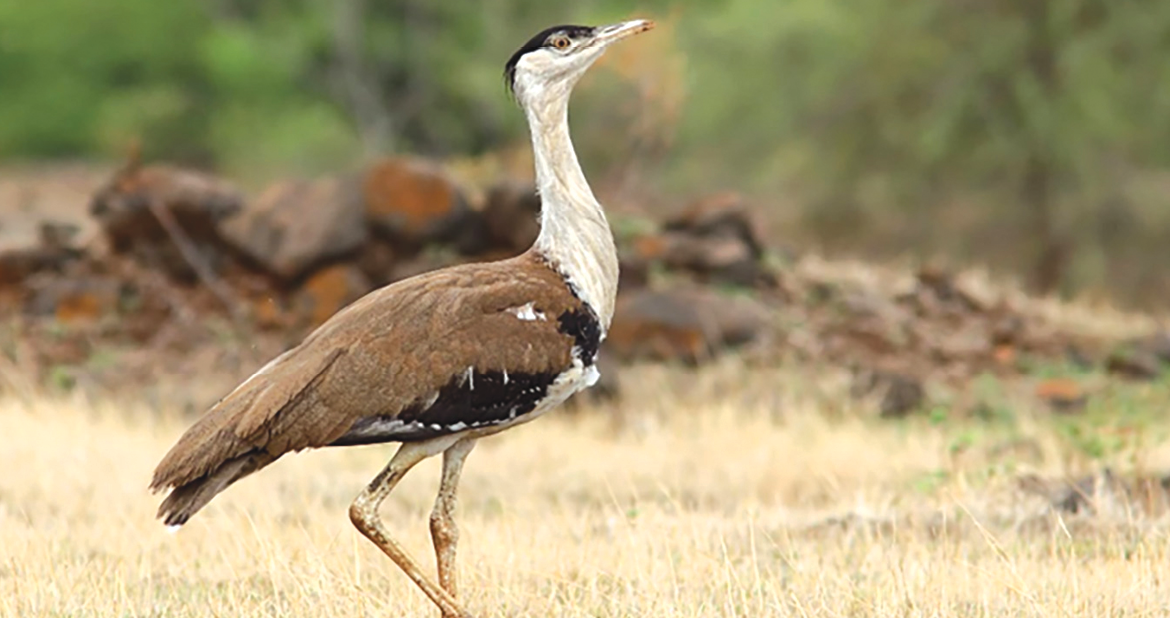
Conservation of Olive Ridley Turtles (2019 – On Going)
The project ‘Disentangling Sea Turtles’ has been designed in partnership with WWF and is working towards securing populations of key threatened marine species along the Indian coastline. The project is working towards mitigating threats to Olive Ridley Sea turtles from both, unsustainable fishing and fishing related activities. Aiming to work closely with the fishermen communities in India, the project aims to mitigate the threats to marine turtles through advocacy at government level. This project helped in raising awareness among 400 fishers and 20 fishnet makers, state forest & fisheries department officials. This also involved the capacity building of 3 field teams from Srikakulam district, for conducting offshore turtle surveys
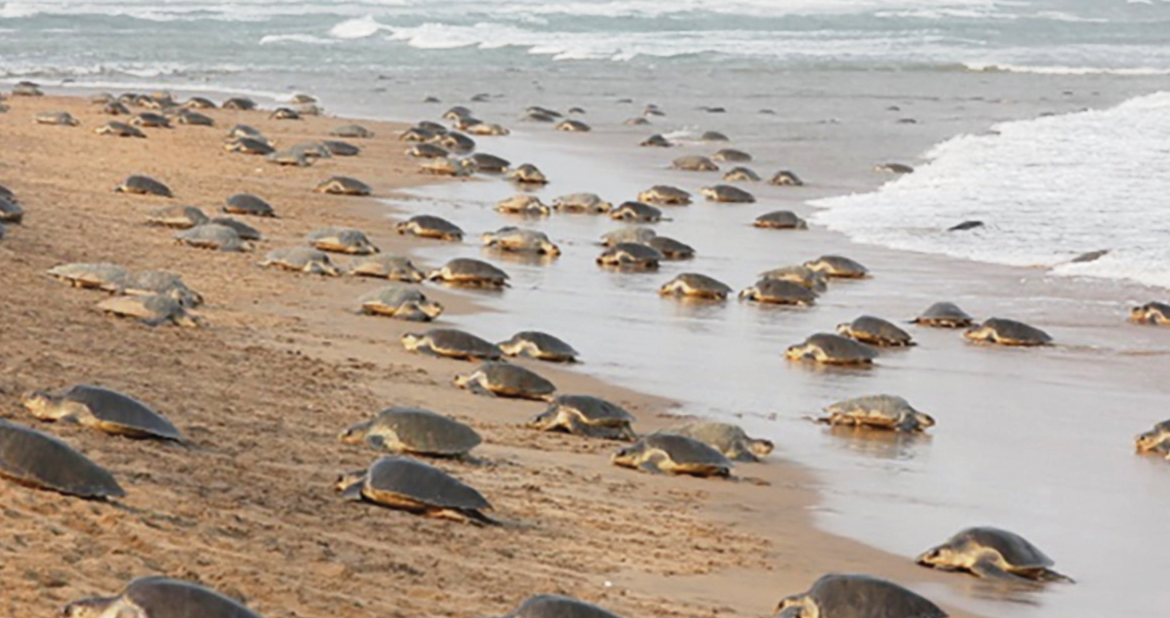
Conservation Red Panda (2020 – On Going)
As pledged, Greenko in 2020 has committed to ensuring the long-term survival of the endangered species Red Panda in Sikkim state of the eastern Himalayas. We have initiated plans to conserve Red Panda in coordination with the Forest and Environment Department, Government of Sikkim and in process of firming up with detailed program of support for conservation. The Program will include support to Panda Breeding Program in Himalayan Zoological Park, Bulbulay, Gangtok covering specific activity on fencing, surveillance and enrichment activity in the first phase.
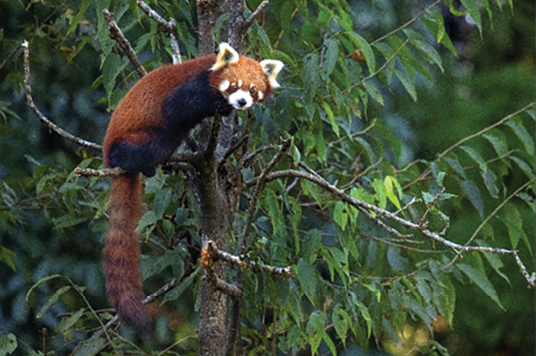
Committing to Conserve Lesser Florican
The Lesser Florican (Sypheotides indicus), also known as the likh or kharmore, is the smallest in the bustard family and the only member of the genus Sypheotides. It is endemic to the Indian Subcontinent where it is found in tall grasslands and is best known for the leaping breeding displays made by the males during the monsoon season.
There are two wildlife sanctuaries in Western Madhya Pradesh is dedicated to Lesser Florican conservation. With the increasing biotic pressure, the birds find it difficult to breed in certain parts of the sanctuaries. The global population of Lesser Florican has come down to alarming levels hence it becomes important to initiate the conservation breeding program of Lesser Florican in collaboration with credible research organisations in Western Madhya Pradesh. The Lesser Florican is extremely important to maintain the functionality of the grass land eco systems.
Greenko has identified this species for conservation efforts during the year 2023 and we will work with the Forest Department of the State of Madhya Pradesh to supplement their efforts in conservation of this endangered species
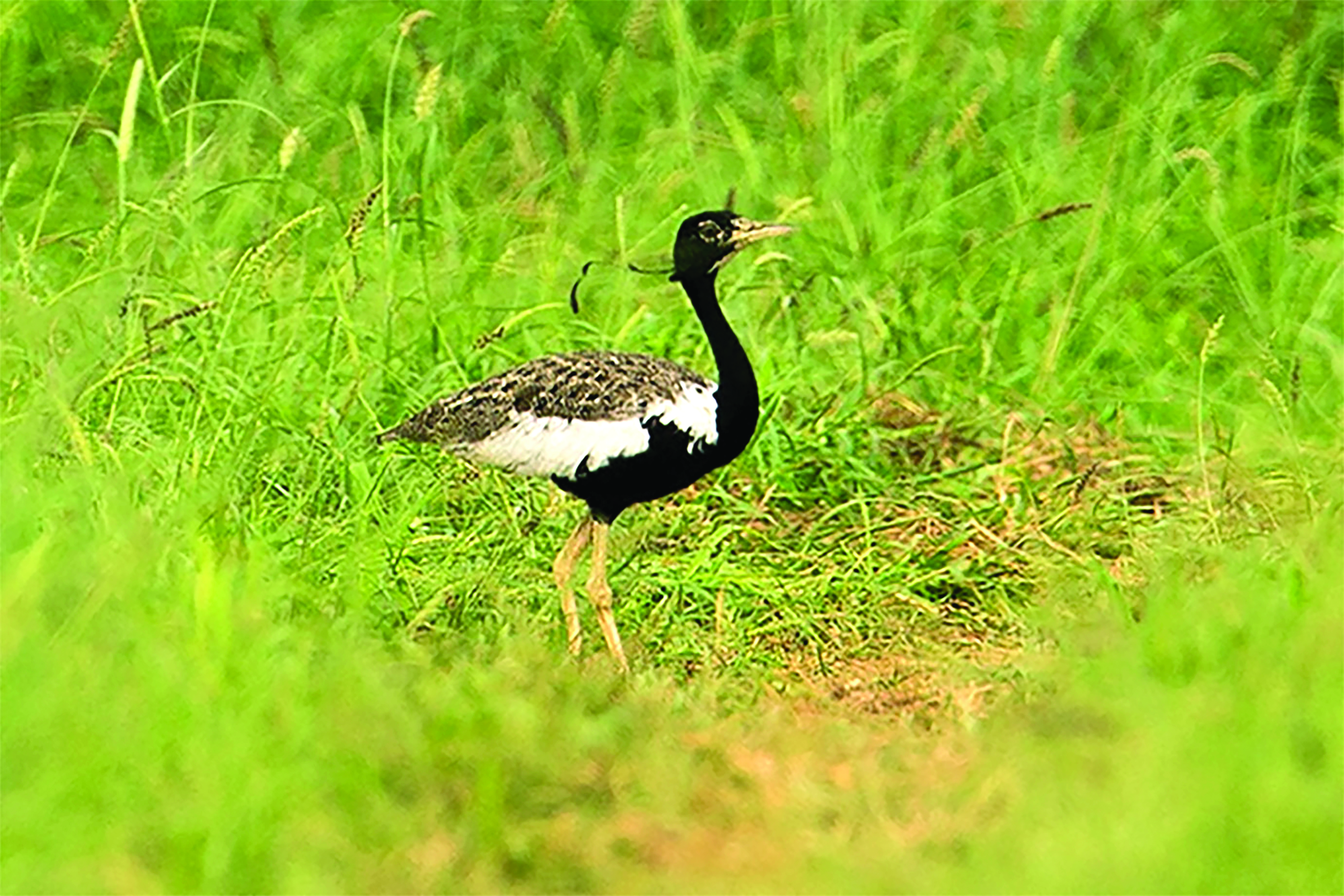
 Integrated Report 2022
Integrated Report 2022


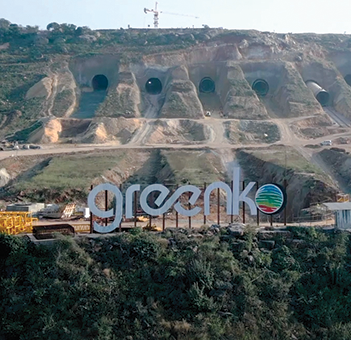
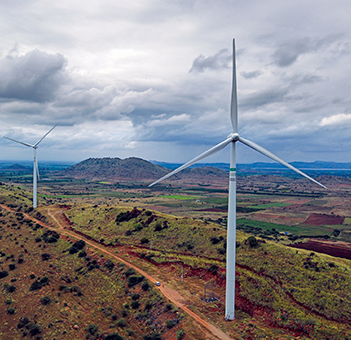
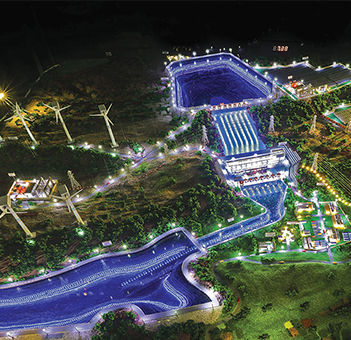
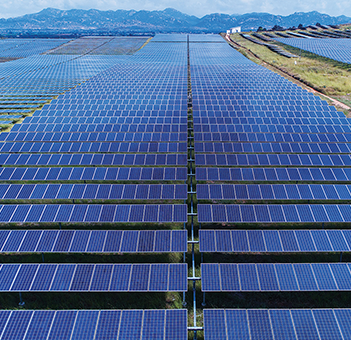
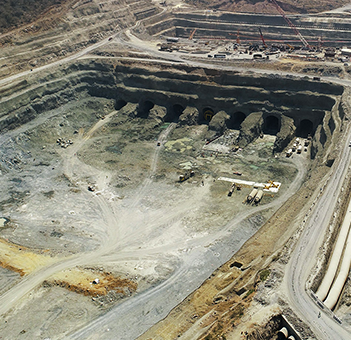

 Previous Page
Previous Page Next Page
Next Page